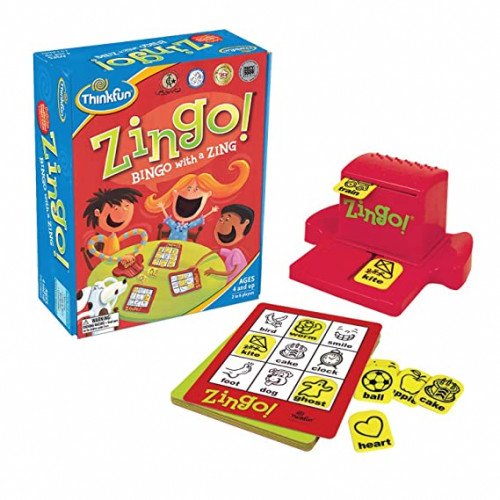TAK VS ZINGO!

TAK
Tak is a two-player abstract strategy game designed by James Ernest and Patrick Rothfuss and published by Cheapass Games in 2016. The goal of Tak is to be the first to connect two opposite edges of the board with pieces called "stones", and create a road. To accomplish this, players take turns placing their own stones and building a road while blocking and capturing their opponent's stones to hinder their efforts at the same. A player "captures" a stone by stacking one of their pieces on top of the opponent's. These stacks can then be moved as a whole or broken up and moved across several spaces on the board. The vertical stacking and unstacking of stones gives a three dimensional element to the game play. A player may move a single piece or a stack of pieces they control. A stack is made when a player moves a stone on top of another flat stone of any color. The stone on top of a stack determines which player has control of that entire stack. All stones move orthogonally in a straight line on the board. There is no diagonal movement. A player can also move a whole stack in addition to single stones. A stack can be moved like a single stone, moved in its entirety one space orthogonally (North, South, East, or West), or it can move several spaces orthogonally by breaking the stack and placing one or more flat stones onto the squares being moved onto. The player can leave any number of stones, including zero, on the starting space, but must place at least one piece for each subsequent move. There is no height limit for stacks, but the amount of stones a player can remove from the stack and move is set by the "carry limit" of the board. The carry limit of the board is determined by the dimensions of the board. For example, if the stack was on a 5x5 board, the carry limit of the stack would be five. Because standing stones and capstones can't be stacked upon, there are no stacks with these pieces at the bottom or in the middle of the stack. Both of these stones however can be moved onto other flat stones to form a stack with them as the head. A capstone may "flatten" a standing stone and use it to form a stack with the capstone as its head, but it must do so alone. For example, a stack with a capstone cannot flatten a standing stone by moving as a stack onto the standing stone, but a stack can be used to move a capstone across the board so that the capstone alone moves to flatten the standing stone as the final movement.
Statistics for this Xoptio

ZINGO!
Zingo! is a game inspired by Bingo released by ThinkFun in 2002. Players try to fill their Zingo! cards with matching tiles from the Zingo! "Zinger". In the game, the dealer slides the Zinger to reveal two tiles at a time. When a player sees a tile that matches a picture on his/her board, he calls out the name of the object and places that tile on the matching space on their board. If two players have that tile, the person who calls out the name of the object first gets the tile. The first player to fill his card wins. The Zingo cards allow for more or less competitive play. The green sides have less images in common with the other 7 boards and are therefore more relaxed and less competitive. The green sides, however, have many of the same images and make for more intense games between players.